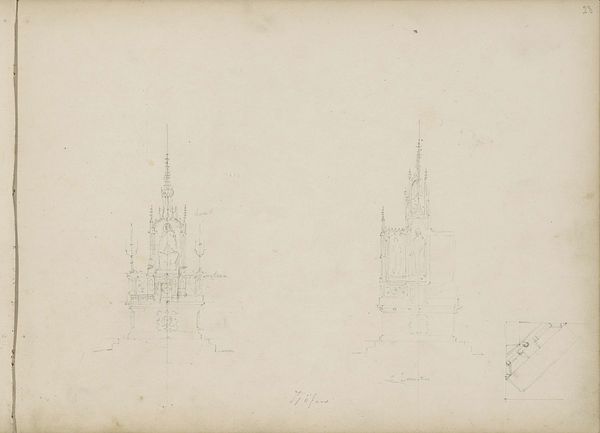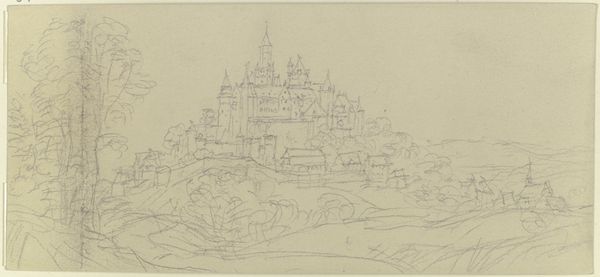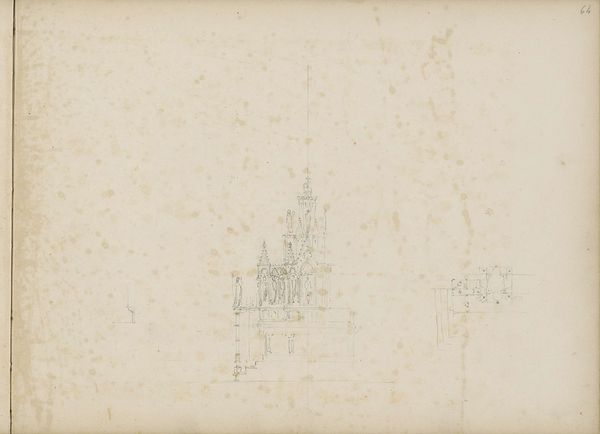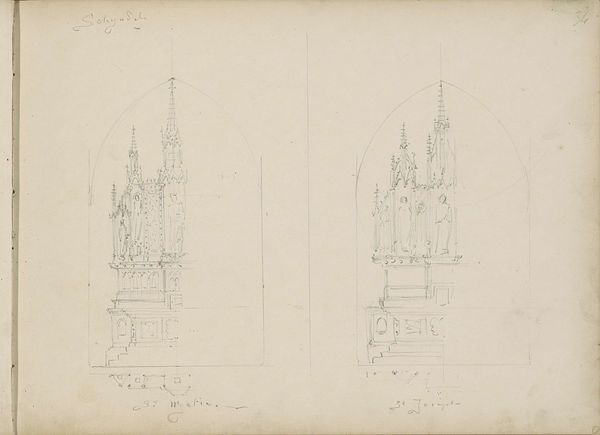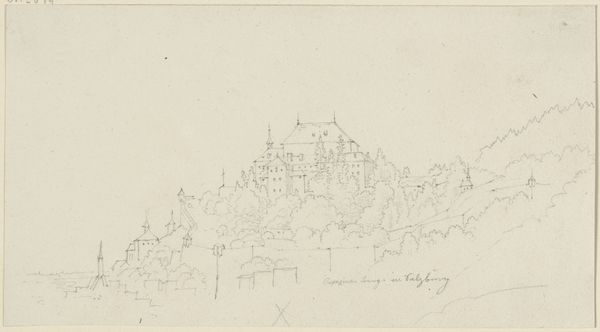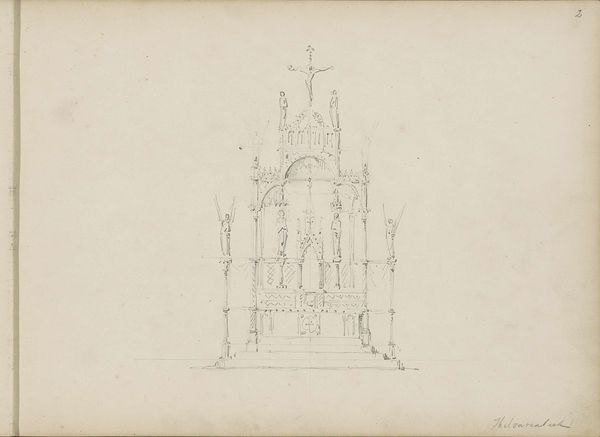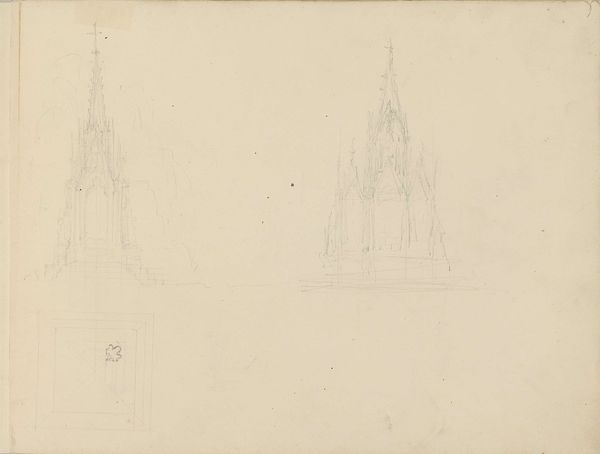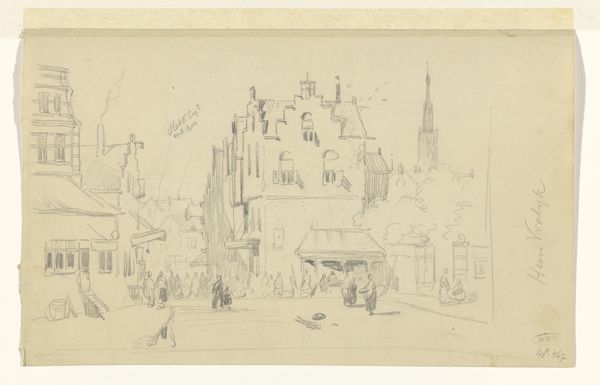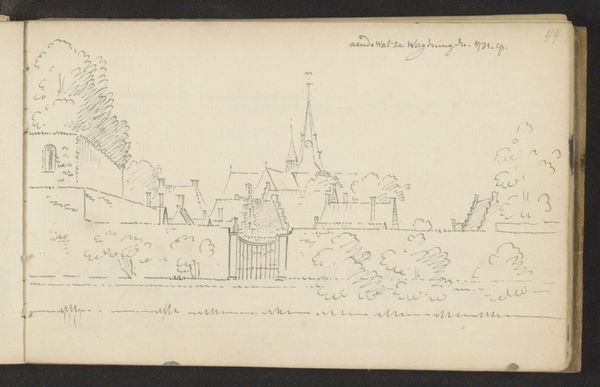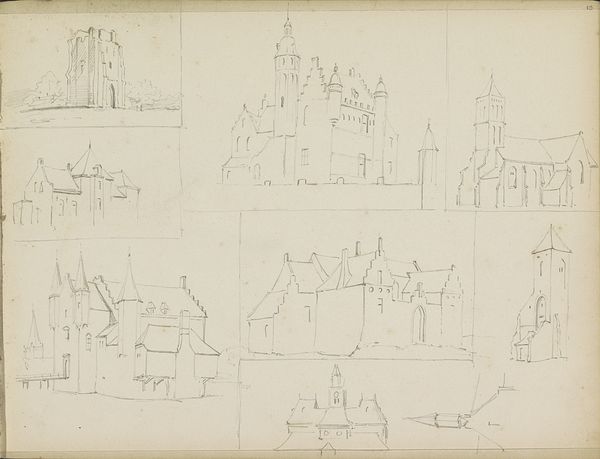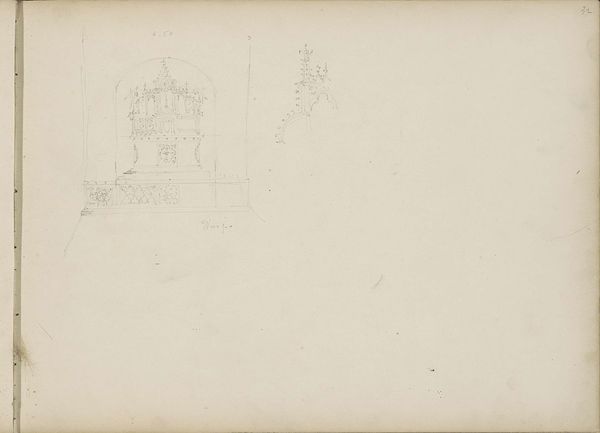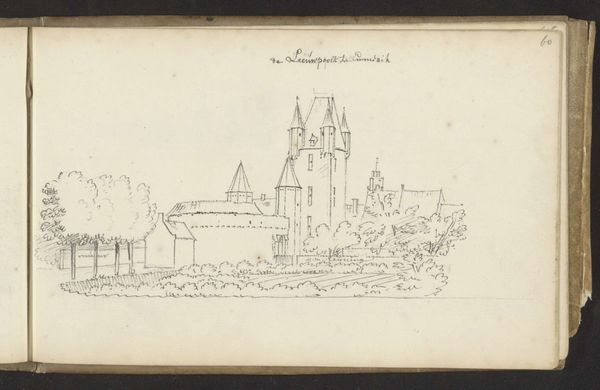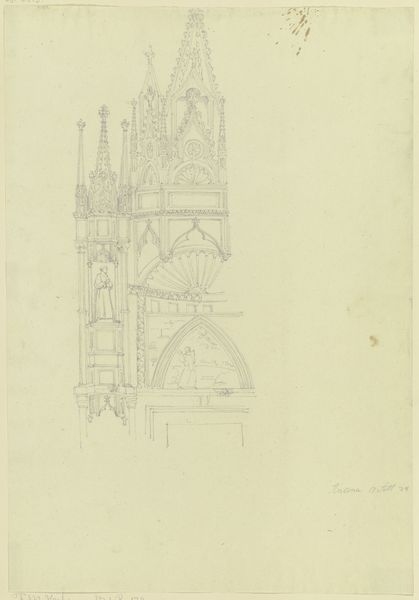
drawing, paper, pencil, architecture
#
drawing
#
amateur sketch
#
aged paper
#
toned paper
#
light pencil work
#
pencil sketch
#
sketch book
#
incomplete sketchy
#
paper
#
form
#
personal sketchbook
#
geometric
#
pencil
#
line
#
sketchbook drawing
#
sketchbook art
#
architecture
Copyright: Rijks Museum: Open Domain
Editor: So, this is "Altaar," a pencil and paper drawing by Pierre Joseph Hubert Cuypers from 1857 to 1859. It's housed here at the Rijksmuseum. The sketch is incredibly faint, but there's a definite structure. How do you interpret this work? Curator: For me, this unassuming sketch carries a lot of weight when considering Cuypers' broader career and the cultural moment. This wasn’t just an altar design, it’s a statement of power. He was advocating for a return to Gothic forms in church architecture, a visual language loaded with religious and political meaning in 19th-century Netherlands. What kind of visual politics are being manifested? Editor: Visual politics? So you're saying choosing a Gothic style wasn’t just about aesthetics, but about making a point? Curator: Absolutely. Think about it. The Gothic style, strongly associated with the Catholic Church, was being revived during a period of intense social and religious upheaval. What did this conscious return to a past style communicate in terms of cultural identity? The reclamation of certain national styles carries considerable symbolic weight. Editor: It’s like he's saying something about the place of the Catholic Church in Dutch identity through architecture. I see the visual reclamation more clearly now. Curator: Precisely. This drawing, though a simple sketch, participates in that much larger, often fraught conversation. It's about legitimizing certain power structures. Also, consider what his artistic decisions may be implying for present and future political power structures and national identities. Editor: That makes me look at it in a completely different light. It's not just a design, it's a manifesto! Curator: Indeed. A quiet, pencil-on-paper manifesto, hinting at broader movements of reclaiming and redefining cultural and religious spaces. I never considered that. Thanks.
Comments
No comments
Be the first to comment and join the conversation on the ultimate creative platform.
